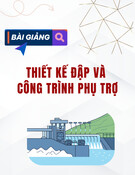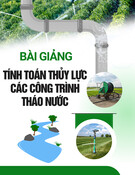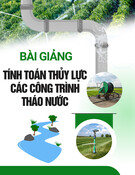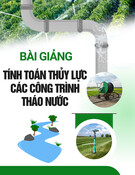
Tạp chí Khoa học và Công nghệ Giao thông Tập 5 Số 1, 102-110
Tạp chí điện tử
Khoa học và Công nghệ Giao thông
Trang website: https://jstt.vn/index.php/vn
JSTT 2025, 5 (1), 102-110
Published online: 27/03/2025
Article info
Type of article:
Original research paper
DOI:
https://doi.org/10.58845/jstt.utt.2
025.vn.5.1.102-110
*Corresponding author:
Email address:
hungnh@utt.edu.vn
Received: 17/03/2025
Received in Revised Form:
21/03/2025
Accepted: 25/03/2025
Construction solutions to connect urban
railway stations with bicycle and pedestrian
infrastructure, towards to develop TOD in
Hanoi
Nguyen Huy Hung
Department of Urban Planning and Urban Transport, Faculty of Civil
Engineering, University of Transport Technology, Hanoi, Vietnam
Abstract: The Transit Oriented Urban Development (TOD) model is a strategy
to maximize the efficiency of land use, public transport and environmental
protection towards the goal of sustainable development. In which, urban
railways are a key tool to materialize the TOD development goal by creating
synchronization between urban development and public transport, creating
new spaces and activities in the attractive areas of station works. To achieve
the goal of improving public health, reducing personal motor vehicles and
reducing emissions that pollute the environment, encouraging people to use
bicycles and walk to access urban railway stations is a top priority to improve
health and limit the overload of motor vehicles on road infrastructure. Through
practical surveys on the Cat Linh - Ha Dong urban railway (line 2A), this paper
focuses on analyzing the current status of works connecting urban railway
stations with bicycle and pedestrian infrastructure, thereby proposing design
and management solutions to optimize the connectivity of bicycle and
pedestrian infrastructure with urban railway stations, as a premise to serve the
goal of TOD development in Hanoi, on the basis of the Cat Linh - Ha Dong
urban railway as a typical example.
Keywords: TOD, construction solutions, connecting stations, urban railway,
bicycle and pedestrian infrastructure.

Tạp chí Khoa học và Công nghệ Giao thông Tập 5 Số 1, 102-110
Tạp chí điện tử
Khoa học và Công nghệ Giao thông
Trang website: https://jstt.vn/index.php/vn
JSTT 2025, 5 (1), 102-110
Ngày đăng bài: 27/03/2025
Thông tin bài viết
Dạng bài viết:
Bài báo nghiên cứu
DOI:
https://doi.org/10.58845/jstt.utt.2
025.vn.5.1.102-110
*Tác giả liên hệ:
Địa chỉ Email:
hungnh@utt.edu.vn
Ngày nộp bài: 17/03/2025
Ngày nộp bài sửa: 21/03/2025
Ngày chấp nhận: 25/03/2025
Giải pháp công trình kết nối nhà ga đường sắt
đô thị với hạ tầng dành cho xe đạp và đi bộ,
hướng tới phát triển TOD tại Hà Nội
Nguyễn Huy Hùng
Bộ môn Quy hoạch và Giao thông đô thị, Khoa Công trình, Trường Đại học
Công nghệ Giao thông vận tải, Hà Nội, Việt Nam
Tóm tắt: Mô hình phát triển đô thị định hướng giao thông công cộng (mô hình
TOD) là một chiến lược để khai thác tối đa hiệu quả sử dụng đất, giao thông
công cộng và bảo vệ môi trường nhằm hướng tới mục tiêu phát triển bền vững.
Trong đó, đường sắt đô thị là công cụ then chốt để cụ thể hóa mục tiêu phát
triển TOD bằng việc tạo ra sự đồng bộ giữa phát triển đô thị và giao thông
công cộng, kiến tạo không gian và các hoạt động mới trong vùng thu hút của
các công trình ga. Để đạt được mục tiêu nâng cao sức khỏe cộng đồng, giảm
phương tiện giao thông cơ giới cá nhân và giảm phát thải gây ô nhiễm môi
trường, việc khuyến khích người dân sử dụng xe đạp và đi bộ để tiếp cận các
công trình ga đường sắt đô thị là ưu tiên hàng đầu nhằm cải thiện sức khỏe
và hạn chế tình trạng quá tải của các phương tiện cơ giới trên hạ tầng đường
bộ. Bằng những khảo sát thực tiễn tại tuyến đường sắt đô thị Cát Linh – Hà
Đông (tuyến 2A), bài báo này tập trung phân tích thực trạng của các công trình
kết nối nhà ga đường sắt đô thị với hạ tầng dành cho xe đạp và đi bộ, từ đó
đề xuất các giải pháp thiết kế và quản lý nhằm tối ưu hóa khả năng kết nối của
hạ tầng xe đạp và đi bộ với công trình ga đường sắt đô thị, làm tiền đề phục
vụ cho mục tiêu phát triển TOD tại Hà Nội, trên cơ sở tuyến đường sắt đô thị
Cát Linh – Hà Đông là một ví dụ điển hình.
Từ khóa: TOD, giải pháp công trình, kết nối nhà ga, đường sắt đô thị, hạ tầng
xe đạp và đi bộ.
1. Giới thiệu
Các nghiên cứu về quy hoạch xây dựng [1-
3] trong thời gian gần đây đưa ra những lập luận
để đề xuất các phương pháp nâng cao hiệu quả sử
dụng đất hỗn hợp mật độ cao kết hợp với phát triển
vận tải hành khách công cộng khối lượng lớn,
những hình thức phát triển này nhằm khuyến khích
được giao thông phi cơ giới và giao thông công
cộng, hạn chế sử dụng phương tiện cơ giới cá
nhân, giúp giảm ách tắc giao thông, bảo vệ môi
trường và nâng cao sức khỏe cộng đồng [4]. Trong
đó, phát triển đô thị theo định hướng giao thông
công cộng (mô hình TOD) là một chiến lược quan
trọng nhằm hiện thực hóa mục tiêu phát triển bền
vững này.
Hình thức vận tải hành khách công cộng khối
lượng lớn phổ biến tại Hà Nội hiện nay là đường
sắt đô thị, đây được coi là xương sống của hệ
thống giao thông thủ đô [5]. Tại Quyết định số
519/QĐ-TTg ngày 31/03/2016 của Thủ tướng
Chính phủ về việc phê duyệt Quy hoạch giao thông
vận tải Thủ đô Hà Nội đến năm 2030, tầm nhìn đến
năm 2050, hệ thống đường sắt đô thị được quy
hoạch gồm 09 tuyến khu vực đô thị trung tâm, 04

JSTT 2025, 5 (1), 102-110
Nguyen
104
tuyến kết nối trung tâm đô thị với các đô thị vệ tinh
và 03 tuyến tàu điện một ray [6]. Theo Quyết định
này, quy hoạch cho đường sắt đô thị Hà Nội được
định hướng khá hoàn chỉnh, giúp giảm áp lực cho
kết cấu hạ tầng giao thông đường bộ, tuy nhiên
quá trình đầu tư xây dựng và vận hành khai thác
còn một số tồn tại nhất định. Điển hình với những
tuyến đã đi vào vận hành khai thác, khả năng kết
nối giữa nhà ga đường sắt đô thị với hạ tầng dành
cho xe đạp và đi bộ còn nhiều hạn chế [7], dẫn đến
chưa phát huy hết tiềm năng khai thác của tuyến
trong vùng ảnh hưởng. Để khắc phục vấn đề nêu
trên, bài báo tập trung nghiên cứu, đánh giá thực
trạng và đề xuất các giải pháp trong thiết kế và
quản lý công trình kết nối nhà ga với hạ tầng cho
xe đạp và đi bộ, hướng tới mục tiêu nâng cao hiệu
quả khai thác vận hành các tuyến đường sắt đô thị
tại Hà Nội, trên cơ sở tuyến đường sắt đô thị Cát
Linh – Hà Đông là đối tượng nghiên cứu.
2. Phương pháp nghiên cứu (theo Hình 1)
Hình 1. Phương pháp nghiên cứu
Trên cơ sở đặt vấn đề về công trình kết nối
giữa nhà ga đường sắt đô thị với hạ tầng cho xe
đạp và đi bộ trong mục tiêu phát triển đô thị định
hướng giao thông công cộng (TOD), từ đó xác định
khu vực khảo sát là tuyến đường sắt đô thị Cát Linh
– Hà Đông (tuyến 2A). Đây là tuyến đường sắt đô
thị đầu tiên được đưa vào vận hành khai thác tại
Hà Nội, đi qua nhiều khu vực có mật độ dân số cao.
Bằng phương pháp khảo sát hiện trường, tác giả
phân tích hiện trạng, tham khảo các kinh nghiệm
quốc tế và đề xuất các giải pháp trong thiết kế và
quản lý công trình kết nối.
3. Khu vực nghiên cứu và thu thập số liệu
Khu vực khảo sát được tác giả và nhóm
nghiên cứu thực hiện xung quanh 12 công trình ga
trên toàn tuyến đường sắt đô thị Cát Linh – Hà
Đông (tuyến 2A). Khảo sát này được thực hiện vào
tháng 02 năm 2025, trong điều kiện thời tiết nồm
ẩm và có mưa nhỏ.
Khảo sát được thực hiện nhằm thu thập các
nhóm thông tin sau: hạ tầng của các bãi trông giữ
xe phục vụ đường sắt đô thị, hạ tầng dành cho xe
đạp, đi bộ và lối cầu thang bộ hành lên xuống nhà
ga. Trong đó phương pháp khảo sát tập trung chủ
yếu là quan sát và đo đạc hiện trường.
4. Kết quả phân tích
Dựa trên những đánh giá và khảo sát tại
tuyến 2A, có thể nhận thấy một số vấn đề còn tồn
tại về mặt công trình trong việc kết nối nhà ga với
hạ tầng dành cho xe đạp và đi bộ, điều này tạo ra
những khó khăn trong việc tiếp cận của người dân
với giao thông công cộng thủ đô, trực tiếp ảnh
hưởng đến mục tiêu phát triển đô thị theo mô hình
TOD dọc hành lang tuyến đường sắt đô thị tại Hà
Nội. Một số yếu tố khó khăn được chỉ ra ở những
hạng mục công trình: khu vực trông giữ xe, hạ tầng
dành cho xe đạp, đi bộ và lối cầu thang bộ hành
lên xuống nhà ga.
4.1. Hạ tầng của các bãi trông giữ xe
Hiện nay có rất ít các khu vực bãi gửi xe
chính thống phục vụ cho hoạt động đỗ, gửi xe của
người dân khi sử dụng dịch vụ vận tải trên tuyến
đường sắt đô thị 2A. Hiện chỉ có Ga Cát Linh và
Ga Hà Đông có khu vực bãi gửi xe chính thống
dành cho đường sắt đô thị, tại 02 vị trí này đều có
mái che, cơ bản đảm bảo số lượng vị trí đỗ cho
người sử dụng. Tuy nhiên qua khảo sát, các bãi đỗ
xe này chủ yếu để phục vụ cho người dân gửi
phương tiện cá nhân, đa phần là xe máy và xe đạp
điện, có rất ít phương tiện phi cơ giới.
Đối với 10 điểm ga còn lại, các bãi trông giữ
xe chủ yếu do các hộ kinh doanh và cơ sở dịch vụ
thương mại lân cận tự tổ chức hoạt động trông giữ
xe nên thường xuyên xảy ra tình trạng không có đủ

JSTT 2025, 5 (1), 102-110
Nguyen
105
vị trí đỗ, đặc biệt có những vị trí trông giữ xe với
khoảng cách di chuyển vượt quá 250m theo bán
kính đi bộ [8] (bán kính hấp dẫn theo mô hình TOD)
tới điểm nhà ga đường sắt đô thị. Một số khu vực
bãi trông giữ xe chưa có mái che, điều này gây ra
không ít khó khăn trong việc tiếp cận của người
dân với loại hình vận tải hành khách công cộng
khối lượng lớn này (Bảng 1).
Mức độ tiện nghi của bãi trông giữ xe (phù
hợp cho đối tượng là xe đạp) cần dựa trên các tiêu
chí đánh giá về: Khoảng cách, an ninh, an toàn,
chiếu sáng, bán kính đi bộ trong phạm vi hấp dẫn,
có khu vực dành cho xe đạp. Trên cơ sở này, có
thể đánh giá mức độ tiện nghi như Bảng 2.
Bảng 1. Hiện trạng các điểm trông giữ xe phục vụ ga tuyến đường sắt đô thị 2A
TT
Tên ga
Khoảng cách khu
vực xe tới ga (m)
Điểm trông giữ xe 02 bánh hiện
tại
Quy mô
(m2)
Số lượng vị trí
đỗ xe 02 bánh
1
Ga Cát Linh
05 – 10
Tầng 1 nhà ga
~960
400
2
Ga La Thành
45 – 55
Tòa nhà Viam, địa chỉ: 12
Hoàng Cầu, Đống Đa, Hà Nội
~120
50
3
Ga Thái Hà
10 - 20
Sân bóng Thái Hà
~210
90
4
Ga Láng
110 – 120
Trường Đào tạo cán bộ Lê Hồng
Phong
~430
180
5
Ga Thượng
Đình
150 – 160
Chợ Thượng Đình
~360
150
6
Ga Vành đai
3
155 – 165
Viện Công nghiệp thực phẩm
~350
146
7
Ga Phùng
Khoang
120 – 130
Học viện Y dược học cổ truyền
Việt Nam
~330
137
8
Ga Văn Quán
10 – 20
Tòa nhà SDU, địa chỉ: 143 Trần
Phú, Hà Đông, Hà Nội
~400
167
9
Ga Hà Đông
160 – 170
Bệnh viện đa khoa Hà Đông
~490
204
10
Ga La Khê
260 – 270
Trường THCS Văn Khê
~240
100
11
Ga Văn Khê
80 – 90
Cây xăng Văn Khê
~120
50
12
Ga Yên Nghĩa
40 – 50
Bãi gửi xe cổng số 1 – Bến xe
Yên Nghĩa
~1200
500
Nguồn: Số liệu do tác giả khảo sát
Bảng 2. Đánh giá mức độ tiện nghi bãi trông giữ xe tuyến đường sắt đô thị 2A
Tên ga
Mức độ tiện nghi của bãi trông giữ xe
Bán kính đi bộ trong phạm vi
hấp dẫn TOD
Khu vực dành riêng cho xe đạp
An toàn, an ninh và chiếu sáng
Ga Cát Linh
● ● ● ● ●
● ● ●
● ● ●
Ga La Thành
● ● ● ●
● ●
● ● ●
Ga Thái Hà
● ● ● ● ●
● ●
● ●
Ga Láng
● ● ●
●
● ●
Ga Thượng Đình
● ●
● ●
● ●
Ga Vành đai 3
● ●
● ●
● ● ●
Ga Phùng Khoang
● ● ●
● ● ●
● ● ●
Ga Văn Quán
● ● ● ● ●
● ●
● ● ● ●
Ga Hà Đông
● ●
●
● ● ●
Ga La Khê
●
● ●
● ● ●
Ga Văn Khê
● ● ●
●
●
Ga Yên Nghĩa
● ● ● ● ●
● ● ● ●
● ● ●
Ghi chú: - Rất tốt: ● ● ● ● ● - Tốt: ● ● ● ●
- Trung bình: ● ● ● - Kém: ● ● - Rất kém: ●

JSTT 2025, 5 (1), 102-110
Nguyen
106
4.2. Hạ tầng dành cho xe đạp và đi bộ
Tiếp cận nhà ga đường sắt đô thị thông qua
đi bộ hoặc xe đạp là hướng đi giúp phát triển loại
hình giao thông chậm bền vững, thân thiện với môi
trường và cải thiện sức khỏe cho người sử dụng
[9]. Trong quy hoạch giao thông [10], việc phát triển
các loại hình phương tiện phi cơ giới nhằm kết nối
sử dụng các phương thức vận tải hành khách công
cộng khối lượng lớn sẽ giúp mở rộng phạm vi vùng
ảnh hưởng của mạng lưới giao thông công cộng,
từ đó làm cơ sở nâng cao hiệu quả sử dụng đất,
công trình công cộng, sức khoẻ cộng đồng, giảm
phương tiện giao thông cơ giới cá nhân, bảo vệ
môi trường, kết hợp với bảo tồn và phát huy giá trị
văn hóa [11], đáp ứng yêu cầu phát triển theo mô
hình TOD.
Tại tuyến đường sắt đô thị Cát Linh – Hà
Đông (tuyến 2A), hạ tầng dành cho xe đạp hoặc đi
bộ còn môt số tồn tại gây ra những cản trở cơ bản
cho người tiếp cận. Điển hình là dọc tuyến hiện nay
chỉ có duy nhất ga Láng, thuộc phường Thịnh
Quang, quận Đống Đa, Hà Nội có đường dành
riêng có các phương tiện phi cơ giới. Đây là tuyến
đường có chiều dài 4km từ Ngã Tư Sở đến Cầu
Giấy, chạy dọc sông Tô Lịch, trong đó có 3m chiều
rộng dành riêng cho người đi xe đạp và 1m chiều
rộng dành cho người đi bộ. Qua khảo sát, tuyến
đường này có nhiều hạng mục công trình không
hoạt động hoặc đã bị xuống cấp, đồng thời có tình
trạng lấn chiếm không gian, như: đỗ ô tô trái phép,
tập kết rác thải và vật liệu xây dựng tại lòng đường
gây cản trở giao thông.
Còn tại 11 nhà ga khác của tuyến 2A đều
chưa có đường dành riêng cho phương tiện phi cơ
giới. Xe đạp và người đi bộ phải sử dụng chung kết
cấu hạ tầng là đường bộ đô thị và phải tham gia
cùng các phương tiện vận tải cơ giới khi muốn di
chuyển tới ga.
Bảng 3. Thông số kỹ thuật và đánh giá về mức độ cản trở tại hè phố xung quanh nhà ga
Tên ga
Chiều
rộng hè
phố (m)
Bề rộng
dành cho
người đi
bộ (m)
Hành vi gây cản trở khả năng tiếp cận trên hè phố
xung quanh nhà ga
Đánh giá chung
Đỗ xe không
đúng quy định
Họp chợ; bán
hàng rong
Xưởng sản xuất;
bãi để vật liệu
Ga Cát Linh
6 - 7
3 - 6
x
● ● ● ●
Ga La Thành
4 - 6
2.5 - 5.5
x
x
● ●
Ga Thái Hà
3 - 5
2 - 4
x
x
● ●
Ga Láng
3.5 - 6
2 - 5
x
x
● ●
Ga Thượng
Đình
4.5 - 6.5
3 - 4
x
● ● ●
Ga Vành đai 3
7 - 12
5 - 8
x
x
● ● ●
Ga Phùng
Khoang
6.5 - 8
4 - 6
x
x
● ●
Ga Văn Quán
6,5 - 8
4 - 5.5
x
● ● ● ●
Ga Hà Đông
4.5 - 6
3 - 5.5
x
● ● ● ●
Ga La Khê
4 - 6.5
2.5 – 6.5
x
x
● ●
Ga Văn Khê
5 - 7
3 - 5
x
x
● ●
Ga Yên Nghĩa
12 - 15
6 - 10
x
x
● ● ● ●
Ghi chú: - Có hành vi: x - Rất tốt: ● ● ● ● ● - Tốt: ● ● ● ●
- Trung bình: ● ● ● - Kém: ● ● - Rất kém: ●
Nghiên cứu của nhiệm vụ khoa học công
nghệ mã số 01C-04/02-2021-2 của Hà Nội [12] đã
chỉ ra rằng, ngay cả khi quãng đường tiếp cận là
ngắn nhưng môi trường đi bộ không thuận lợi cũng
không hấp dẫn việc sử dụng giao thông công cộng.
Việc thiếu đường đi bộ, thiếu hè phố, chất lượng
hè phố hay đường đi bộ kém, thiếu ánh sánh đều
ảnh hưởng đến việc đi bộ.
Đối với người sử dụng xe đạp, các tuyến
đường bộ đô thị hiện nay chưa được đồng bộ trang
bị hệ thống các rãnh đỗ dành cho xe đạp, từ đó gây
ra không ít khó khăn cũng như tiềm ẩn những nguy

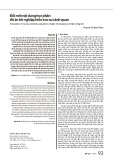
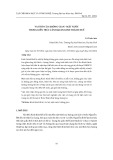
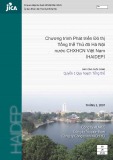

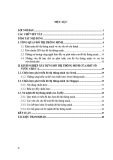
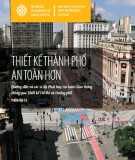

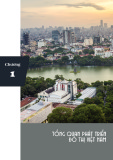
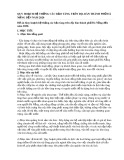




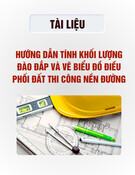
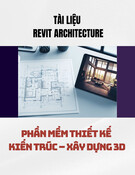
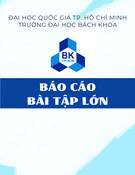

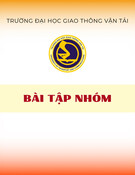

![Bài giảng Quản lý vận hành và bảo trì công trình xây dựng [chuẩn nhất]](https://cdn.tailieu.vn/images/document/thumbnail/2025/20251006/agonars97/135x160/30881759736164.jpg)
